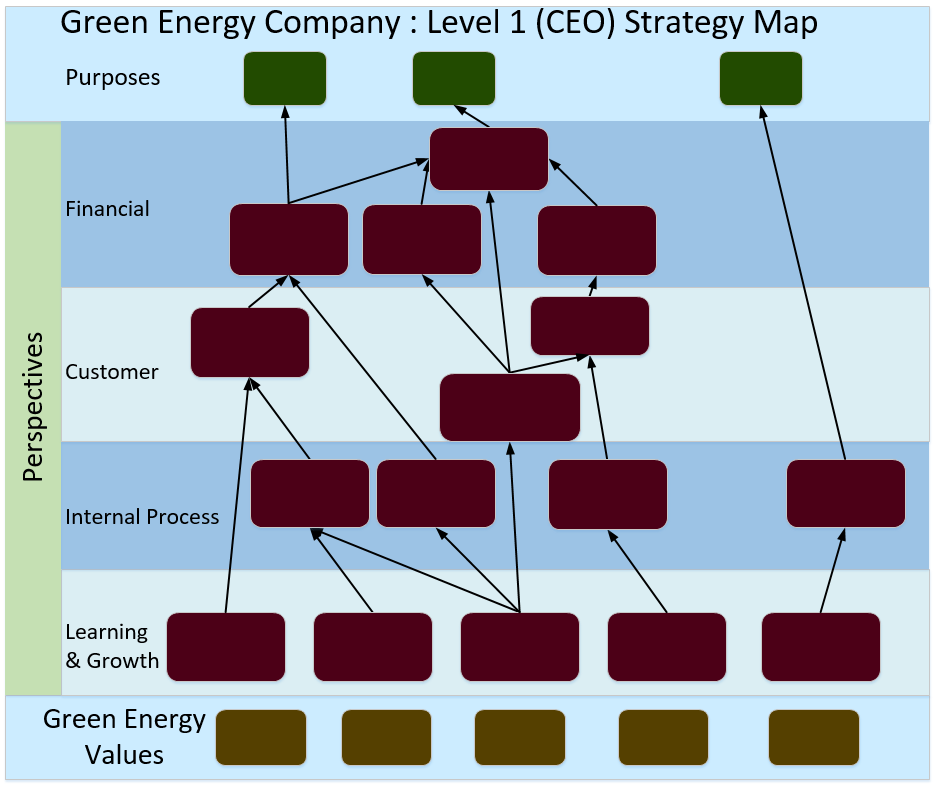Strategy Maps

Step 1 of the Quoxient system is to develop a "Strategy Map" for every person in a leadership position, which presents a clear view of the organisational unit that he or she leads. On each Strategy Map, the ultimate strategic goals of the organisation are expressed as "Purposes", and shown at the top of the map. Purposes are accomplished by leaders at all levels achieving each of their own aligned "Objectives" on their individual Strategy Maps. Objective are clustered within one of four "Perspectives" (i.e. different ways of looking at the organisation) such as Financial, Customer, Internal Process and Learning and Growth. The "Values" (shown at the base of each map) underpin the organisational culture and "the way of working".

Perspectives
At one time, most organisations were looked at from a "Financial Perspective" .... Metrics included Profit / Lost, Balance Sheet, Share Price, Dividends...but these are all outcomes from a deeper layer of activities. What are those activities, and how do they influence the Financial Perspective? A closer look at an Organisation reveals at three further Perspectives:
The majority of revenue is attributable to customers – therefore it's vital to understand the needs of the customer, so a "Customer Perspective" is required.
If we are to serve our customers better, and ultimately improve finances, we need to focus on and improve the organisation's own "Internal Business Processes".
Finally, what can we learnt from previous experience, and how can the organisation grow? Success is always accompanied by opportunities missed and lessons learnt, so in order improve a "Learning and Growth" Perspective is required.
These are the default perspectives used to look at organisations, although different types of organisations may require alternative or additional perspectives which Quoxient will help develop.

Purposes
Most Executives would agree that they need a clear understanding of their strategic goals, which are normally defined within a mission statement. Quoxient calls these high level goals "Purposes" the reason that the organisation exists. These are at the top level of an organisation's Strategy Map...every "Objective" (see Objective definition) set at every level in must be aligned with and contribute to the achievement of an organisation's Purposes.

Objectives
Every Leader at each level of an organisation needs intimate knowledge of their own "Objectives". These are the goals that must be achieved for a successful outcome at both team and organisational level. On a Strategy Map, each Objective cascades down from a "Purposes" which it is linked to, and are positioned within the appropriate "Perspective" so that alignment is clearly visible.